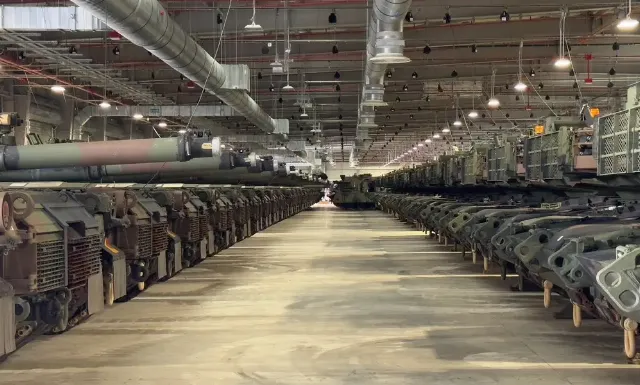 AbramsX – prototype of the "tank of the future"
AbramsX – prototype of the "tank of the future"On May 1, the US Army officially confirmed its intention to adopt the M1E3 Abrams tank in less than three years, accelerating the development of a new armored vehicle.
It is expected that deliveries of the new product will begin in 24-30 months, which is much earlier than previously planned for 2030. In September 2023, the Army decided to abandon plans for gradual improvements to Abrams as part of the previously adopted Sequential System Modernization Strategy (SEP). Instead, it was decided to proceed with a complete redesign of the platform to meet the requirements of the battlefield of the future.
The new M1E3 will combine the best features of the M1A2 SEPv4, as well as the modular architecture of open systems, which will allow for rapid modernization and implementation of technologies with less resources.
- noted in the command.
The constant increase in mass leads to critical logistical and operational constraints, which has been confirmed by combat experience in Ukraine. In particular, the war has shown the vulnerability of traditional armored vehicles to barraging ammunition, UAVs and modern anti-tank guided weapons, which has led to a reassessment of comprehensive solutions for the protection of equipment.
The M1E3 will have reinforced armor and a helmet (it was decided to rely not on mounted kits, but on built-in protection); a hybrid-electric power plant, which is expected to reduce fuel consumption by 50%; an unmanned turret with automatic loader, which will reduce the number of crew from 4 to 3 people; on-board artificial intelligence, capable of prioritize threats by improving targeting, and work together with UAVs.
The tank will have a reduced weight (for example, the mass of the AbramsX prototype has decreased by about 10 tons compared to modern Abrams modifications) and communication capabilities with drones.
 US Army Storage Base in Powidz, Poland
US Army Storage Base in Powidz, PolandThe US Army's decision to accelerate the development of the M1E3 was made after General Randy George, shortly after he became Chief of Staff of the Army, was presented with a 65-month production schedule. He instructed the development team to reduce this period by at least two thirds.
According to Alex Miller, Director of Technology at the Army, the current process of acquiring new products has been sharply criticized, which can take more than 10 years from the launch of the program to its implementation, as it no longer corresponds to the pace of technological change. Miller criticized the traditional purchasing culture for trying to "manage all risks to the point where they don't exist."
Despite the tight deadlines, the army is confident that it will be able to adopt the M1E3 within the current five-year budget cycle. Before the production of the new tank begins, a limited upgrade of the existing MBT to the SEPv3 level will be carried out.
Globally, the US Army is not alone in its quest to create a new generation of MBT. The French Leclerc Evolution tank, being developed by KNDS, should be ready for operation by 2030. The German Rheinmetall concern presented the KF51 Panther tank. The Franco-German EMBT project is intended to be a transitional model for the completely new MGCS MBT. In South Korea, Hyundai Rotem is developing the K3 tank. The T-14 Armata is being finalized in Russia.
